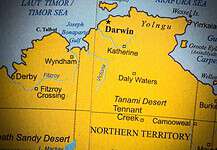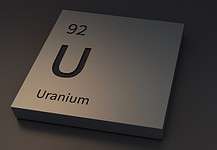Quantum computing and Australian mining: developments from CSIRO

Quantum computing is a groundbreaking field of science that holds the potential to revolutionise various industries and reshape our world.
As Australia positions itself as a global leader in quantum technologies, the country’s scientific research organisation, CSIRO, is at the forefront of developing quantum applications for the mining sector.
By leveraging advanced technologies like Superconducting Quantum Interference Devices (SQUIDs) and embracing the concept of zero-entry mines powered by digitalisation and automation, Australia is driving significant advancements in the mining industry.
Recent developments from CSIRO in quantum computing promise to have a transformative impact on Australian mining.
The power of squids in mineral exploration
CSIRO’s LandTEM, a portable exploration tool, utilises SQUIDs to revolutionise mineral exploration.
SQUIDs are quantum sensors that can detect magnetic fields with extraordinary sensitivity, even at a scale 100 million times smaller than Earth’s magnetic field.
When combined with large coils placed in the ground, LandTEM can inject electromagnetic fields and measure the response, called the Eddy current, from ore bodies deep within the Earth’s crust.
This technology has been successfully used by mining companies in Australia and North America, contributing to the discovery of billions of dollars’ worth of ore deposits globally.
LandTEM has not only reduced exploration costs but has also improved the accuracy and efficiency of mineral exploration.
Quantum computing
Quantum computing, with its unparalleled processing power, offers tremendous potential for the mining industry.
Traditional mining processes generate vast amounts of data related to drilling, exploration, and mineral analysis.
Quantum computers, which use quantum bits (qubits) capable of existing in multiple states simultaneously, can process and analyse this data exponentially faster than classical computers.
The ability to analyse large datasets rapidly and accurately empowers mining companies to make better-informed decisions, optimise operations, and improve overall efficiency.
CSIRO team leader for quantum systems Dr Muhammad Usman explains that while classical physics governs our everyday macroscopic experiences, quantum physics unravels intriguing phenomena at the subatomic level, making it a powerful tool for mineral exploration.
Post-quantum cryptography and mining security
As the mining industry embraces the expanding realm of quantum technologies, post-quantum cryptography (PQC) becomes a vital aspect of securing mining operations.
While classical cryptography techniques already play a crucial role in protecting data and communication within the mining sector, PQC is poised to provide enhanced security in the era of quantum computing.
Quantum computers’ unprecedented computing power poses a potential threat to current cryptographic methods, making PQC crucial for ensuring the integrity and confidentiality of sensitive mining data.
By adopting advanced cryptographic techniques resistant to quantum attacks, the mining industry can safeguard its critical infrastructure and operations.
Digital mines: paving the way to zero-entry mining
The vision of zero-entry mines, where human workers are minimally involved in hazardous underground operations, is becoming a reality through digitalisation and automation.
CSIRO digital mining lead Dr Ewan Sellers highlights that as mining becomes increasingly automated, the roles and skillsets required in the industry are evolving.
Mechatronic engineers, electrical technicians and software engineers now play critical roles in designing, programming and maintaining the machines that power zero-entry mines.
By utilising sensors, automation and remote-controlled vehicles and equipment, zero-entry mines improve occupational health and safety while enhancing efficiency and productivity.
This transformation not only reduces the risk to miners but also optimises mineral extraction processes and minimises environmental impacts.
Tracking mineral provenance and sustainability
Digital tools are reshaping the entire mining value chain, enabling the tracking of minerals from their extraction to consumption and even recycling.
CSIRO science lead for the ‘Minerals 4D’ project Dr Mark Lindsay emphasises the importance of digital tools in tracking the provenance of minerals.
By leveraging technologies like AI, machine learning, and blockchain, companies and governments can ensure responsible mining practices and monitor environmental impacts throughout the mining value chain.
These digital tools enable better-informed decision-making, optimise energy and water consumption, and contribute to the reduction of carbon emissions.
As the global push for sustainability intensifies, tracking mineral provenance becomes crucial, particularly for critical metals required in renewable energy technologies.
Challenges and future outlook
While quantum computing and digitalisation offer immense opportunities for the mining industry, they also present challenges.
The volume and diversity of data generated in mining operations require effective management and integration into models.
Additionally, the potential risks and assumptions made by machines and computers in fully automating mining operations necessitate human supervision for decision support and confirmation.
Striking the right balance between automation and human oversight will be crucial for safe and efficient mining practices.
Looking ahead, the development of quantum computers capable of error-correction and practical applications remains a significant milestone.
The advent of a fully error-corrected quantum computer will truly mark a groundbreaking leap in the quantum realm and open up unprecedented possibilities for various industries, including mining.
CSIRO is at the forefront of leveraging quantum computing and digitalisation to revolutionise the mining industry.
Through the use of SQUIDs and quantum sensors, CSIRO’s LandTEM has transformed mineral exploration, leading to the discovery of billions of dollars’ worth of ore deposits globally.
Moreover, the concept of zero-entry mines powered by digital tools and automation promises safer and more efficient mining operations.
Tracking mineral provenance and prioritising sustainability through digitalisation contribute to responsible mining practices and align with the global push for environmental stewardship.







































